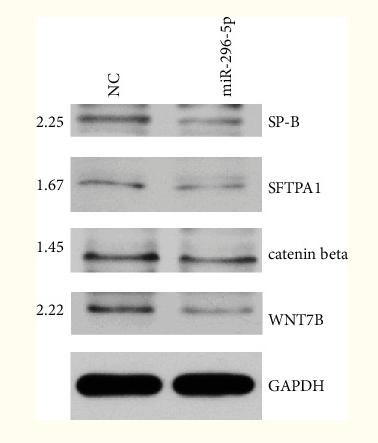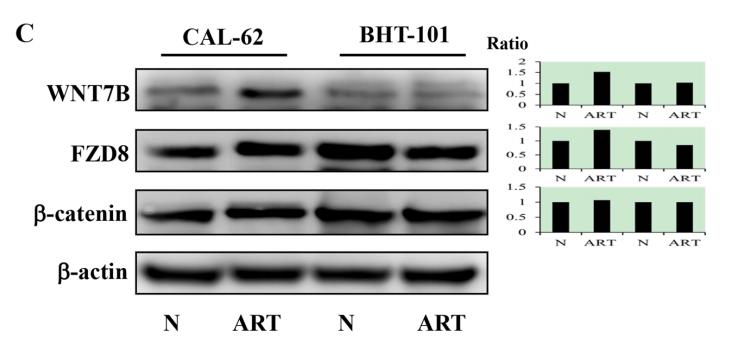WNT7B Antibody - #DF9042
| Product: | WNT7B Antibody |
| Catalog: | DF9042 |
| Description: | Rabbit polyclonal antibody to WNT7B |
| Application: | WB IHC IF/ICC |
| Cited expt.: | WB |
| Reactivity: | Human, Mouse, Rat |
| Prediction: | Pig, Bovine, Horse, Dog, Chicken |
| Mol.Wt.: | 39 kDa; 39kD(Calculated). |
| Uniprot: | P56706 |
| RRID: | AB_2842238 |
Related Downloads
Protocols
Product Info
*The optimal dilutions should be determined by the end user. For optimal experimental results, antibody reuse is not recommended.
*Tips:
WB: For western blot detection of denatured protein samples. IHC: For immunohistochemical detection of paraffin sections (IHC-p) or frozen sections (IHC-f) of tissue samples. IF/ICC: For immunofluorescence detection of cell samples. ELISA(peptide): For ELISA detection of antigenic peptide.
Cite Format: Affinity Biosciences Cat# DF9042, RRID:AB_2842238.
Fold/Unfold
Protein Wnt-7b; Wingless related MMTV integration site 7B; Wingless type MMTV integration site family member 7B; WNT; WNT7B; WNT7B_HUMAN;
Immunogens
A synthesized peptide derived from human WNT7B, corresponding to a region within C-terminal amino acids.
Moderately expressed in fetal brain, weakly expressed in fetal lung and kidney, and faintly expressed in adult brain, lung and prostate.
- P56706 WNT7B_HUMAN:
- Protein BLAST With
- NCBI/
- ExPASy/
- Uniprot
MHRNFRKWIFYVFLCFGVLYVKLGALSSVVALGANIICNKIPGLAPRQRAICQSRPDAIIVIGEGAQMGINECQYQFRFGRWNCSALGEKTVFGQELRVGSREAAFTYAITAAGVAHAVTAACSQGNLSNCGCDREKQGYYNQAEGWKWGGCSADVRYGIDFSRRFVDAREIKKNARRLMNLHNNEAGRKVLEDRMQLECKCHGVSGSCTTKTCWTTLPKFREVGHLLKEKYNAAVQVEVVRASRLRQPTFLRIKQLRSYQKPMETDLVYIEKSPNYCEEDAATGSVGTQGRLCNRTSPGADGCDTMCCGRGYNTHQYTKVWQCNCKFHWCCFVKCNTCSERTEVFTCK
Predictions
Score>80(red) has high confidence and is suggested to be used for WB detection. *The prediction model is mainly based on the alignment of immunogen sequences, the results are for reference only, not as the basis of quality assurance.
High(score>80) Medium(80>score>50) Low(score<50) No confidence
Research Backgrounds
Ligand for members of the frizzled family of seven transmembrane receptors that functions in the canonical Wnt/beta-catenin signaling pathway. Required for normal fusion of the chorion and the allantois during placenta development (By similarity). Required for central nervous system (CNS) angiogenesis and blood-brain barrier regulation.
Palmitoleoylation is required for efficient binding to frizzled receptors. Depalmitoleoylation leads to Wnt signaling pathway inhibition.
Secreted>Extracellular space>Extracellular matrix. Secreted.
Moderately expressed in fetal brain, weakly expressed in fetal lung and kidney, and faintly expressed in adult brain, lung and prostate.
The intrinsically disordered linker region is required for recognition by RECK in brain endothelial cells.
Belongs to the Wnt family.
Research Fields
· Cellular Processes > Cellular community - eukaryotes > Signaling pathways regulating pluripotency of stem cells. (View pathway)
· Environmental Information Processing > Signal transduction > mTOR signaling pathway. (View pathway)
· Environmental Information Processing > Signal transduction > Wnt signaling pathway. (View pathway)
· Environmental Information Processing > Signal transduction > Hippo signaling pathway. (View pathway)
· Human Diseases > Infectious diseases: Viral > Human papillomavirus infection.
· Human Diseases > Infectious diseases: Viral > HTLV-I infection.
· Human Diseases > Cancers: Overview > Pathways in cancer. (View pathway)
· Human Diseases > Cancers: Overview > Proteoglycans in cancer.
· Human Diseases > Cancers: Specific types > Basal cell carcinoma. (View pathway)
· Human Diseases > Cancers: Specific types > Breast cancer. (View pathway)
· Human Diseases > Cancers: Specific types > Hepatocellular carcinoma. (View pathway)
· Human Diseases > Cancers: Specific types > Gastric cancer. (View pathway)
· Organismal Systems > Endocrine system > Melanogenesis.
References
Application: WB Species: human Sample: CAL-62 cells
Application: WB Species: Human Sample: A549 cell
Restrictive clause
Affinity Biosciences tests all products strictly. Citations are provided as a resource for additional applications that have not been validated by Affinity Biosciences. Please choose the appropriate format for each application and consult Materials and Methods sections for additional details about the use of any product in these publications.
For Research Use Only.
Not for use in diagnostic or therapeutic procedures. Not for resale. Not for distribution without written consent. Affinity Biosciences will not be held responsible for patent infringement or other violations that may occur with the use of our products. Affinity Biosciences, Affinity Biosciences Logo and all other trademarks are the property of Affinity Biosciences LTD.


